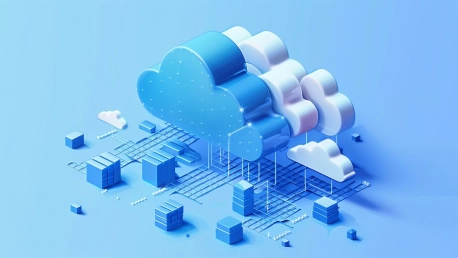In the rapidly changing world of cloud computing, Microsoft Azure continues to make significant strides in enhancing its infrastructure, particularly to support cutting-edge artificial intelligence (AI) workloads. This transformation of Azure’s backbone from a conventional utility computing framework to a sophisticated AI powerhouse underscores the importance of specialized hardware and innovative technologies in meeting the demands of modern AI applications.
Evolution of Azure’s Hardware
Initially, Azure’s infrastructure relied on a single standard server design tailored for general utility computing, which was sufficient for basic cloud services. However, as AI workloads became increasingly complex, the need for more specialized hardware grew evident. Azure has since evolved to incorporate a diverse range of server types, GPUs, and AI-specific accelerators to address the specialized needs of these advanced workloads. This shift signifies a crucial development in cloud infrastructure, catering to the growing demands of AI training and inference tasks.
AI Supercomputing Capabilities
Azure’s hardware advancements are prominently reflected in its AI supercomputing capabilities, where significant upgrades have been made over recent years. The 2020 AI-training supercomputer featured 10,000 Nvidia V100 GPUs. By 2023, this number rose to 14,400 #00 GPUs, showcasing a dramatic increase in computational power. These supercomputers have achieved high rankings in global benchmarks, highlighting Azure’s commitment to maintaining a competitive edge in AI performance and scalability.
Efficiency in AI Training and Inference
Efficiency in both AI training and inference is paramount, as modern AI models like the Llama-3-70B require extensive computational resources. Training these models demands vast GPU hours, necessitating powerful supercomputing infrastructure. Inference operations, while less intensive than training, still require substantial computational power and memory bandwidth. Azure’s infrastructure is optimized to handle these requirements, ensuring effective performance for AI applications.
Infrastructure Innovations for Sustainability
Microsoft’s Project POLCA and Maia hardware introduce critical innovations aimed at efficient and sustainable computing. These projects include the development of advanced liquid cooling systems and efficient power draw management, which enhance performance and stability. Such innovations are essential for maintaining operational efficiency and managing the increased energy demands of modern AI workloads, aligning with Microsoft’s broader commitment to sustainability.
Data Management and High-Bandwidth Networks
Handling the vast amounts of data necessary for training AI models is a significant challenge. To address this, Microsoft has developed the Storage Accelerator, designed to optimize data distribution and retrieval. High-bandwidth networking solutions, such as InfiniBand connections, are critical for enabling fast data-parallel workloads, which are essential for AI performance. These advancements in data management and networking underscore Azure’s capability to handle the intense data demands of AI training and inference.
Orchestration and Reliability
Project Forge and One Pool are orchestration frameworks that ensure balanced load distribution and resource prioritization across Azure’s AI infrastructure. These systems are designed to detect failures and manage repairs swiftly, minimizing operational interruptions and maintaining efficiency. This focus on orchestration and reliability is vital for supporting the complex and dynamic nature of AI workloads.
Security and Confidential Computing
In the dynamic and ever-evolving landscape of cloud computing, Microsoft Azure continues to make noteworthy advancements in fortifying its infrastructure, especially to accommodate the rising demands of sophisticated artificial intelligence (AI) workloads. This ongoing transformation of Azure’s core from a traditional utility computing framework to a highly advanced AI powerhouse highlights the critical role of specialized hardware and pioneering technologies in meeting the complex requirements of contemporary AI applications.Microsoft Azure’s evolution is not merely about upgrading its systems; it’s about rethinking and reengineering its entire infrastructure to support the immense computational needs that modern AI tasks necessitate. This shift involves integrating cutting-edge processing units, advanced storage solutions, and robust networking capabilities to ensure that AI workloads are handled with exceptional efficiency and speed.Additionally, Azure’s commitment to innovation is evident in its continuous investments in research and development, aimed at enhancing AI capabilities and performance. By fostering an ecosystem where AI can thrive, Microsoft is ensuring that Azure remains a top choice for developers and enterprises looking to leverage AI technologies. This proactive approach allows businesses to unlock new insights, optimize operations, and drive innovation using Azure’s powerful AI-driven infrastructure.









